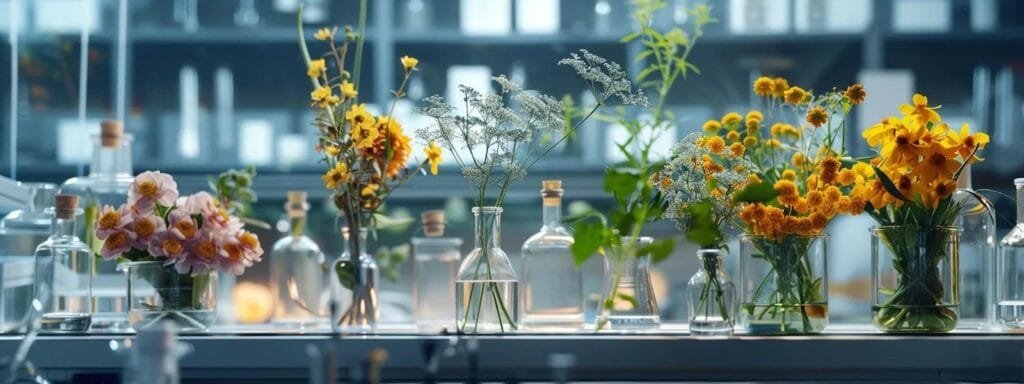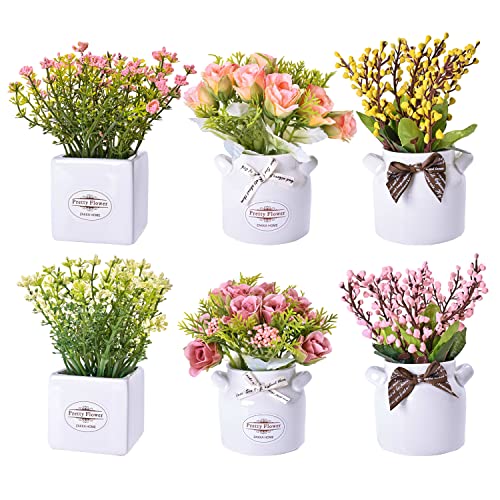- Choosing the Right Vase Materials to Preserve Spring Flower Freshness
- What Are the Best Vase Materials for Keeping Spring Flowers Fresh?
- Best Selling Spring Vase
- How Does Vase Material Affect Flower Longevity and Vibrancy?
- What Are the Top Spring Flower Arrangement Tips for Using Different Vase Materials?
- How Can You Keep Flowers Fresh Longer With Proper Vase Care?
- Which Vase Materials Are Best for Specific Spring Flowers?
- What Are the Latest Research and Case Studies on Vase Materials and Flower Freshness?
- How to Choose and Maintain the Perfect Spring Vase for Long-Lasting Flowers?
- Frequently Asked Questions
- Final Thoughts
Choosing the Right Vase Materials to Preserve Spring Flower Freshness
Spring is here, and nothing says “fresh start” like a burst of colorful blooms in a vase that not only looks gorgeous but also helps your flowers last longer. Choosing the right vase material is as important as selecting the perfect bouquet. Today, our savvy shopping companion from WowWants.com brings you a funny yet informative guide on the best vase materials for spring flowers. We explain why the vase material matters, how different materials affect flower longevity and vibrancy, and share actionable vase care tips. We also review which materials suit specific blooms like roses, tulips, and lilies, along with insights from recent studies and expert experiences. Let’s embark on this blooming journey and find out which vase is your flower’s best friend this season!
What Are the Best Vase Materials for Keeping Spring Flowers Fresh?
Vase materials not only enhance the look of your arrangement but also create a supportive environment for your blooms. Below is a concise analysis of each type and its interaction with water, air, and natural decay.
Why Are Glass Vases Ideal for Flower Longevity?
Glass vases are celebrated for their non-porous surfaces that prevent water absorption and maintain consistent water levels. They provide a bright, clean environment that does not alter water pH, helping to discourage bacteria growth. Their transparency lets you easily monitor water clarity and spot changes that might indicate contamination. Additionally, the sleek, reflective quality of glass enhances the visual appeal of any arrangement, making every petal pop. This combination of functionality and style makes glass a top choice among many florists.
How Do Ceramic Vases Help Maintain Flower Freshness?
Ceramic vases offer a unique blend of aesthetic appeal and practical benefits. They present a subtle, earthy look that complements spring flowers while their insulating properties help regulate water temperature. Many ceramic vases have a glazed, non-porous interior that resists water and bacteria absorption, reducing microbial growth. Their robust build can also protect delicate blooms from knocks or temperature dips. Home decorators often favor ceramic for its artisanal designs and seasonal décor compatibility. Read customer reviews on the Spring Vase Collection to see what others love about these joyful designs.
Can Metal Vases Preserve Flowers Longer?
Metal vases bring a modern, industrial edge and are popular for their durability and style. Vases with polished or anodized finishes are non-porous and naturally resistant to bacteria when properly sealed or lined. However, some metals may react with water, altering its pH and affecting freshness. Modern metal vases typically use protective coatings to prevent such issues. Their reflective surfaces add a striking, mirror-like quality to flower displays, making them ideal for contemporary décor.
Are Plastic Vases Suitable for Spring Flowers?
Plastic vases are a budget-friendly option that comes in many colors and styles. Their non-porous surface can help reduce bacterial growth, although they generally lack the longevity and sturdy feel of glass, ceramic, or metal. Plastic vases might not provide the clarity needed to monitor water quality and can accumulate scratches over time, which may harbor bacteria. Still, high-quality plastic vases can be effective for short-term displays or outdoor use if chosen with a smooth finish.
Best Selling Spring Vase
How Does Vase Material Affect Flower Longevity and Vibrancy?
The vase material significantly influences how long your spring flowers stay fresh. Factors such as porosity and surface texture affect water clarity and bacteria growth, which in turn impact flower health.

What Role Does Porosity Play in Vase Material Selection?
Porosity refers to the amount a material absorbs water. Non-porous materials like glass and glazed ceramics keep water free of contaminants and prevent the mingling of unwanted chemicals. This controlled environment not only preserves the nutrients available to the flower but also hinders bacterial buildup. For example, studies have shown that lower porosity can extend flower lifespan by about 25% compared to more porous alternatives.
How Does Vase Material Influence Bacteria Growth?
The surface texture and chemical nature of a vase determine how easily bacteria can adhere to it. Smooth, inert surfaces found in glass and high-quality ceramics resist bacterial adhesion, thereby maintaining water clarity and extending bloom life. In contrast, plastic vases with scratches or rough finishes may harbor bacteria more easily, leading to quicker decay.
Which Materials Are Best for Preventing Water Contamination?
Materials such as glass, glazed ceramics, and well-treated metal vases offer superior protection against water contamination. Their non-reactive, non-porous surfaces help maintain clean, nutrient-rich water. While lower-quality plastic may be more vulnerable if it becomes scratched or cloudy, the combination of low porosity and chemical inertness in premium materials is key to prolonging flower freshness.
What Are the Top Spring Flower Arrangement Tips for Using Different Vase Materials?
The type of vase you choose not only affects the longevity of your blooms but also the overall impact of your arrangement. Here are practical tips for leveraging each material to create a stunning display. Check out real user feedback on spring vases to make an informed purchase decision.
How to Choose the Right Vase Style for Spring Flowers?
The vase style should complement both the flowers and the intended display. For long-stemmed flowers like roses and lilies, a classic, slender glass vase works best, emphasizing the curves and colors of the blooms. In contrast, ceramic vases with unique shapes can add a statement piece quality, especially for more subdued arrangements. Consider how the vase’s form will support proper water circulation and display visibility.
What Are the Best Practices for Arranging Flowers in Glass and Ceramic Vases?
When arranging flowers in a glass vase, trim the stems at an angle to maximize water uptake and prevent clumping by leaving space between the blooms. In ceramic vases, whose water level may not be visible, arrange flowers in a fan-like or radial pattern to encourage even water distribution. In both cases, grouping similar colors and adding green foliage can enhance depth and texture while reducing bacterial buildup from overcrowding.
How to Adapt Flower Care Techniques Based on Vase Material?
Tailor your care routine according to the vase material. With glass vases, regularly check for cloudiness and change the water every two days. In ceramic vases, set reminders for water changes as the level is less apparent. For metal vases, verify that any protective coating remains intact to avoid pH changes, and inspect plastic vases frequently for scratches that could harbor bacteria. In all cases, using flower food in the water boosts nutrient availability and supports longer-lasting blooms.
How Can You Keep Flowers Fresh Longer With Proper Vase Care?
Maintaining your blooms goes beyond choosing the right vase—it also requires proper care techniques. Here are essential practices to keep your spring arrangements vibrant.

#image_title
What Are the Essential Flower Care Tips for Spring Vases?
Begin with clean, lukewarm water and mix in a packet of flower food to combat bacterial growth. Always cut the stems at a 45-degree angle and remove any leaves below the waterline to prevent decay. Regularly monitor the water for cloudiness and change it immediately if necessary. Handle flowers gently to avoid bruising, and remove wilted blooms promptly, as they can release bacteria that affect the remaining flowers.
How Often Should You Change Water in Different Vase Materials?
Water changing routines depend on the vase material and arrangement density. For glass vases, a change every two days is ideal since any microbial buildup is easily noticeable. Ceramic vases work best with a water change every three days, while metal vases follow a similar schedule to glass. Plastic vases, particularly if scratched, may require daily changes to prevent bacterial growth, especially in warmer climates. Explore creative vase styling tips to elevate your home decor with vibrant spring aesthetics.
What Is the Role of Flower Food and Preservatives in Vase Care?
Flower food contains antibacterial agents, sugars, and acids that help maintain water clarity and provide essential nutrients to the flowers. Adding it to your vase water can reduce bacterial proliferation and supports the metabolism of cut stems. Always follow the manufacturer’s guidelines for dosage to maximize its effectiveness. Learn about sustainable vase materials at The Spruce’s eco-friendly decor guide for environmentally conscious styling.
How to Properly Cut and Re-Arrange Stems for Vase Longevity?
Use sharp, clean scissors to cut stems at an angle, increasing the surface area for water absorption. Re-cut stems every few days to prevent blockage from bacteria. Removing excess foliage that sits below the waterline helps maintain cleanliness, and periodically rearranging the stems can improve water circulation and nutrient uptake for all blooms.
Which Vase Materials Are Best for Specific Spring Flowers?
Different spring flowers have unique characteristics and thrive in specific vase materials. Matching the vase to the flower type enhances water uptake and overall longevity.
What Vase Materials Work Best for Roses in Spring?
Roses, with their heavy and moisture-loving blooms, perform best in glass vases. The non-porous quality of glass keeps the water clean and allows easy monitoring of quality, which helps preserve the deep, rich colors and natural fragrance of roses. Many florists recommend adding flower food and performing regular water changes to further enhance the lifespan of your roses.
How to Select Vases for Tulips and Lilies?
Tulips and lilies benefit from the structure of ceramic vases. A ceramic vase with a wide opening provides sufficient spacing for elongated stems and helps maintain a consistent water temperature, key for these sensitive flowers. A subtle design in a ceramic vase can ground the simple beauty of tulips, while for lilies, a structure that complements their dramatic shape enhances their sophisticated look.
Are There Vase Materials to Avoid for Delicate Spring Flowers?
Delicate flowers, such as orchids or small wildflowers, require a gentle, non-reactive environment. Avoid vases made from low-grade plastic or uncoated metals that might leach chemicals or cause temperature fluctuations. Instead, opt for high-quality glass or well-glazed ceramic options that protect fragile blooms and present them in an elegant, refined manner.
What Are the Latest Research and Case Studies on Vase Materials and Flower Freshness?
Research into vase materials has confirmed many traditional tips with scientific data, reinforcing the significance of material choice in flower longevity.

What Do Studies Say About Flower Longevity in Glass vs. Ceramic Vases?
Recent studies indicate that glass vases offer a 20–25% improvement in flower longevity compared to more porous materials. Their smooth, non-porous surfaces limit bacterial contamination and help keep water chemistry stable. Ceramic vases, particularly those with a high-gloss finish, also perform well due to their insulating properties, though slight variations in glaze quality can affect their efficiency.
How Have Customer Experiences Validated Vase Material Choices?
Feedback from florists and home decorators supports the scientific findings. Many report that arrangements in glass vases remain vibrant longer than those in plastic, which can discolor over time. Consistent user reviews praise high-quality ceramic and glass vases for their durability and overall performance when paired with regular maintenance routines.
Which Industry Experts Recommend Specific Vase Materials?
Top florists and interior designers recommend glass and premium ceramic vases for their non-reactive surfaces and ease of cleaning. Their endorsements highlight that investing in a quality glass or ceramic vase not only elevates the décor but also significantly extends the life of your blooms by reducing decay factors.
Table: Comparison of Vase Materials for Flower Freshness
| Vase Material | Key Attributes | Main Benefit | Potential Drawback | Ideal For |
|---|---|---|---|---|
| Glass | Non-porous, clear | Excellent water monitoring | Fragile and may be heavy | Roses, long-stem blooms |
| Ceramic | Insulating, artistic | Stable temperature control | Variations in glaze can lead to water absorption | Tulips, lilies |
| Metal | Modern, durable | Stylish and bacteria resistant if coated | May react with water if untreated | Contemporary décor |
| Plastic | Lightweight, economical | Affordable and versatile | Prone to scratches and bacterial build-up | Temporary/outdoor use |
Using this table, you can quickly determine which vase material best balances aesthetics, cost, and functionality for your specific needs.
How to Choose and Maintain the Perfect Spring Vase for Long-Lasting Flowers?
Selecting a vase is not merely about its look; it’s also about understanding how the material interacts with your flowers. Proper maintenance is key to ensuring that your chosen vase supports a long-lasting display.For expert tips on floral care, visit Cornell University’s guide to extending vase life to keep your blooms fresh longer.
What Factors Should You Consider When Buying a Spring Vase?
When buying a vase, consider the material, size, shape, and overall design relative to your bouquet. The material determines water retention and bacterial resistance, while the vase’s shape should allow for proper water and air circulation. For example, tall, narrow vases work well for long-stemmed flowers like roses, whereas a short, wide vase may be better for clustered arrangements.
Practicality is also important—choose vases that are easy to clean and versatile enough to use with various arrangements throughout the season. A neutral or clear vase typically lets the natural beauty of the blooms shine, while a decorative vase can serve as a focal point in your décor.
How to Clean and Care for Different Vase Materials?
Cleaning methods vary by material. For glass, a gentle wash with warm water and dish soap followed by a soft cloth rinse prevents scratches. Glazed ceramic vases can be cleaned similarly, though extra care should be taken with decorative surfaces. Metal vases require that their protective coating remains intact, and specialized cleaners can prevent corrosion. Plastic vases may need a soft brush to clean crevices and should have water changes more frequently to avoid bacteria buildup.
Where to Find High-Quality Vases That Preserve Flower Freshness?
High-quality vases are available both online and in specialty home décor stores. Websites like Amazon and dedicated décor shops offer a range of options filtered by material, size, and design. Look for products with high ratings and detailed reviews regarding durability and ease of cleaning, as these factors are important for long-term flower freshness.
Frequently Asked Questions
Q: How often should I change the water in my vase? A: For optimal freshness, change water every two days for glass and metal vases, every three days for ceramic ones, and daily for plastic vases. Regular water changes help prevent bacteria buildup and ensure sustained nutrient uptake.
Q: Is there a best material for vases if I frequently change the water? A: Glass is ideal because it is non-porous and allows you to easily monitor water clarity. Ceramic is also effective when properly glazed. Both are excellent choices for those who maintain a regular water-changing routine.
Q: Can I use plastic vases if I take extra care? A: Yes, high-quality plastic vases work if they have a smooth, non-scratched surface and you change the water frequently. However, they generally don’t offer the visual appeal or durability of glass or ceramic.
Q: Which vase material best preserves the natural temperature of the water? A: Ceramic vases tend to insulate water better, maintaining a more stable temperature—a benefit for sensitive flowers that might wilt if the water warms up too much.
Q: Are there any vase materials that require special cleaning products? A: Metal vases, especially those with a delicate coating, may need specialized cleaners to prevent corrosion. Glass, ceramic, and high-quality plastic can typically be cleaned with warm water, mild dish soap, and a soft cloth.
Q: How does flower food work, and should it be used with every vase material? A: Flower food contains antibacterial agents and nutrients that help maintain water quality and extend vase life. It is recommended for use in all vase materials, though its effect is maximized in non-porous surfaces like glass and glazed ceramics.
Q: What should I consider when matching vase material to specific flower types? A: Consider the flower’s stem strength, water requirements, and overall aesthetics. Glass vases work best for robust flowers like roses, while delicate blooms benefit from high-quality, non-reactive materials such as ceramic.

Final Thoughts
Selecting the perfect vase material blends science with style to ensure your spring flowers remain fresh, vibrant, and delightful. By understanding the properties of glass, ceramic, metal, and plastic, you can make an informed choice that balances aesthetic appeal with practical benefits. Adopting proper care techniques—from regular water changes to strategic stem cutting—further extends the lifespan of your blooms. With these insights and practical tips, every flower enthusiast can transform simple arrangements into long-lasting masterpieces that brighten any space.













[…] creative ways to enhance your home with our spring vase styling ideas, explore material choices for lasting vase freshness, or read customer reviews on our spring vase collection. For expert advice on floral arrangements, […]
[…] reviews are invaluable when selecting the perfect spring vase. They offer detailed insights into the size, design, material, and decorative potential of each […]